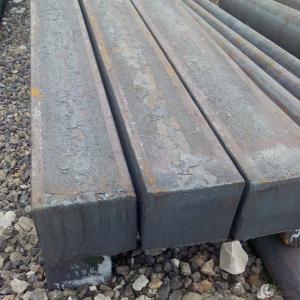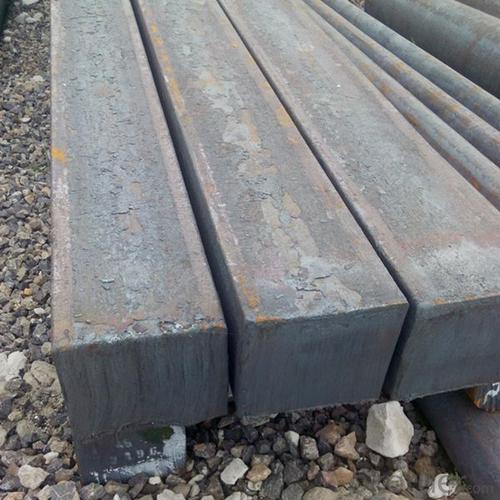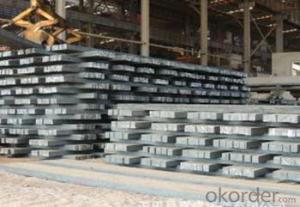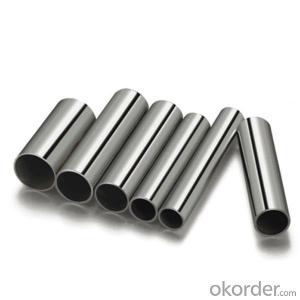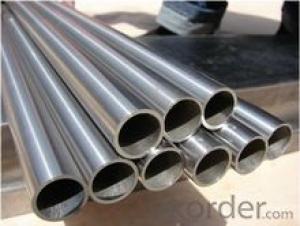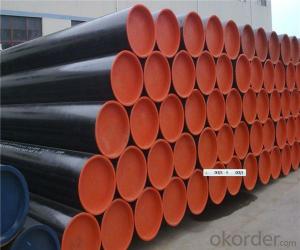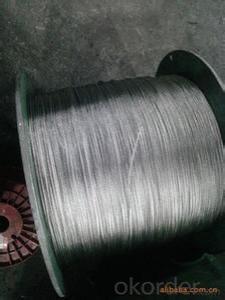steel pipe professional manufacturer supplied by CNBM
- Loading Port:
- China main port
- Payment Terms:
- TT OR LC
- Min Order Qty:
- 25 m.t.
- Supply Capability:
- 2000 m.t./month
OKorder Service Pledge
Quality Product, Order Online Tracking, Timely Delivery
OKorder Financial Service
Credit Rating, Credit Services, Credit Purchasing
You Might Also Like
Packaging & Delivery
| Packaging Details: | bundles |
| Delivery Detail: | 15-30 days |
| Carbon Steel Seamless Pipes | |||||||
| OD | 10mm-610mm(1/8”-24”) | ||||||
| WT | 2mm-60mm | ||||||
| Length | Random Length: 3.5m-12m, or fixed length 5.8m or as the customer’s requirement. | ||||||
| Standard | ASTM A53, ASTM A106, API 5L, DIN 17175, GOST8731/8732, G3457/G3452 etc. | ||||||
| Material | Q235B, 10#,20#,45#, 16Mn, 15MnV. | ||||||
A53B, A106B, API5L B, A192, A179C, A213-T12, A213-T22, A335-P1, A335-P2, A333 | |||||||
| ST37, ST33, ST37-2, ST35.8 ST52 etc. | |||||||
| Certificate | API certificate and ISO certificate. | ||||||
| Surface | Rust remove, black painting, antirust oil, varnish, 3PE, hot-dip galvanized etc. | ||||||
| Package | By bundles, plastic caps or steel caps, woven, wooden cases or as requirement. | ||||||
| Capability | 6000tons/month. | ||||||
| End | BE/PE. | ||||||
| Advantage | Big diameter and thick wall pipes. | ||||||
| Best price with good quality. | |||||||
| The partner you can trust. | |||||||
| Good service and very patient. | |||||||

- Q: What are the main factors affecting the fatigue strength of steel billets?
- The main factors affecting the fatigue strength of steel billets include the material composition and quality, the presence of surface defects or imperfections, the applied stress levels, the frequency or rate of the applied cyclic loading, and the temperature conditions during the fatigue process.
- Q: How are steel billets used in the manufacturing of defense equipment?
- Due to their strength, durability, and versatility, steel billets are crucial in the production of defense equipment. Armored vehicles, tanks, and artillery require materials that can withstand extreme conditions and offer optimal protection. Steel billets, which have a square or rectangular cross-section, are semi-finished steel products used as the raw material for various defense equipment components. These billets are melted and cast into specific shapes that meet the exact requirements of each equipment part. After casting, steel billets undergo forging, heat treatment, and machining processes to create different defense equipment components such as armor plates, gun barrels, missile casings, and vehicle frames. The high strength and impact resistance of steel billets make them ideal for these applications, ensuring the equipment can endure ballistic impacts, blast forces, and other hostile conditions encountered in combat situations. Additionally, steel billets can be easily welded, allowing for the assembly of complex structures and the integration of different components. This flexibility enables the production of customized defense equipment tailored to fulfill specific military needs. Furthermore, steel billets possess corrosion resistance, which is vital for defense equipment exposed to harsh environmental conditions like saltwater or extreme temperatures. This resistance ensures the longevity and reliability of the equipment, reducing maintenance requirements and costs. In summary, steel billets play a crucial role in the manufacturing of defense equipment as they provide the necessary strength, durability, and flexibility for effective performance in combat situations. Their usage guarantees that defense forces have access to reliable and robust equipment, enhancing their operational capabilities and safeguarding the lives of military personnel.
- Q: What are the main factors affecting the metallurgical properties of steel billets?
- The metallurgical properties of steel billets are influenced by several key factors. These factors encompass the steel's composition, the applied heat treatment, the presence of impurities, and the rate at which it cools. The composition of the steel plays a pivotal role in determining its metallurgical properties. The steel's strength, hardness, and ductility are significantly impacted by the amount of carbon present, as well as the inclusion of other alloying elements like manganese, chromium, and nickel. Additionally, different compositions can affect the steel's ability to resist corrosion or exhibit magnetic properties. Heat treatment is another crucial factor that affects the metallurgical properties of steel billets. Through this process, the steel is heated to a specific temperature and then cooled at a controlled rate. By altering the steel's microstructure, heat treatment influences its hardness, toughness, and overall mechanical properties. Various methods of heat treatment, such as annealing, quenching, and tempering, can be employed to achieve desired metallurgical properties. The presence of impurities in the steel also has an impact on its metallurgical properties. Impurities like sulfur, phosphorus, and oxygen can have negative effects on the steel's mechanical properties, diminishing its strength and ductility. Hence, minimizing the level of impurities is crucial to ensure the desired metallurgical properties. Lastly, the cooling rate during the solidification process plays a pivotal role in determining the steel billets' microstructure and properties. Rapid cooling, as seen in quenching, leads to a fine-grained microstructure that enhances the steel's strength and hardness. Conversely, slow cooling, such as during annealing, results in a coarse-grained microstructure that improves the steel's ductility and toughness. In conclusion, the metallurgical properties of steel billets are influenced by factors such as composition, heat treatment, impurities, and cooling rate. These factors are interconnected and must be carefully controlled to achieve the desired properties for various applications.
- Q: How are steel billets stored to prevent corrosion?
- In order to prevent corrosion, steel billets are typically stored in a manner that avoids direct contact with moisture and oxygen, which are the primary culprits. One common approach involves keeping the billets indoors in a controlled environment, such as a warehouse or storage facility. These facilities are specially designed to maintain low levels of humidity and often feature climate control systems for temperature and moisture regulation. To provide further protection against corrosion, steel billets can be placed on wooden pallets or racks. This ensures that they are kept away from the ground and any potential sources of moisture. Additionally, it is customary to apply a protective coating or oil film on the surface of the billets before storing them. This coating acts as a barrier, preventing moisture and oxygen from directly contacting the steel and reducing the risk of corrosion. Regular inspections and maintenance are crucial to promptly identify and address any signs of corrosion. This may involve periodic cleaning, applying additional protective coatings, or implementing other preventive measures as needed. By storing steel billets in a controlled environment, applying protective coatings, and conducting regular inspections, the risk of corrosion can be significantly minimized. This ensures that the billets remain in optimal condition for future use.
- Q: Can steel billets be polished for improved surface finish?
- Yes, steel billets can be polished to achieve an improved surface finish. Polishing is a mechanical process that involves removing a thin layer of the material's surface to smooth out any imperfections or roughness. It can be done using various techniques such as abrasive polishing, chemical polishing, or electrochemical polishing. Polishing steel billets not only enhances their aesthetic appeal but also improves their functional properties. A polished surface reduces friction, which can be beneficial in applications where smooth movement or reduced wear is required. Additionally, a polished surface can improve the corrosion resistance of steel by creating a barrier against environmental factors. However, it is important to note that the extent to which a steel billet can be polished depends on its composition and properties. Some alloys may be more easily polished than others, and certain surface finishes may require more extensive polishing processes. It is also crucial to consider the desired application and the specific requirements for the steel billets before deciding on the appropriate polishing method.
- Q: What are the common surface defects in steel billets during cooling?
- During the cooling process of steel billets, several common surface defects can occur. These defects can arise due to various factors such as improper handling, inadequate cooling techniques, or material impurities. Some of the most common surface defects in steel billets during cooling include: 1. Scale Formation: Scale is a thin layer of oxides that forms on the surface of the steel due to exposure to air during the cooling process. It can result in a rough and uneven surface, reducing the overall quality of the billet. 2. Cracks: Cracks can occur during cooling due to the thermal stresses induced in the steel. These cracks can be longitudinal, transverse, or even intergranular, affecting the structural integrity of the billet. 3. Lamination: Lamination defects occur when layers or sheets of steel separate from each other due to inadequate bonding during the cooling process. This can lead to weak spots in the billet and reduce its overall strength. 4. Shrinkage Cavities: Shrinkage cavities, also known as shrinkage porosity, occur when the steel solidifies and contracts during cooling, resulting in voids or cavities in the billet's surface. These cavities can weaken the steel and compromise its mechanical properties. 5. Surface Roughness: Inadequate cooling techniques can lead to uneven cooling and rapid solidification, resulting in a rough and uneven surface texture on the billet. This defect can affect the billet's surface finish and subsequent processing. 6. Decarburization: Decarburization is the loss of carbon content from the surface of the billet due to exposure to high temperatures and oxygen during the cooling process. This can lead to reduced hardness and strength in the affected areas. To minimize these surface defects, proper cooling techniques, including controlled cooling rates, use of protective coatings, and handling practices, should be implemented. Regular inspection and quality control measures are also essential to identify and rectify any defects during the cooling process and ensure the production of high-quality steel billets.
- Q: How are steel billets used in the production of mining machinery?
- Steel billets are used in the production of mining machinery as they serve as the raw material for forging and shaping various components such as gears, shafts, frames, and structural elements. These billets are heated and then formed into desired shapes through processes like rolling, machining, and welding. The high strength and durability of steel make it ideal for withstanding the harsh conditions and heavy loads associated with mining operations, ensuring the reliability and performance of mining machinery.
- Q: What are the market trends and growth prospects for steel billets?
- The market trends for steel billets indicate steady growth prospects. With the increasing demand for steel in various sectors such as construction, automotive, and infrastructure, the demand for steel billets is expected to rise. Additionally, the growing focus on sustainable and eco-friendly construction materials is likely to drive the market further. Furthermore, the expanding urbanization and industrialization in emerging economies present significant growth opportunities for the steel billets market. Overall, the market for steel billets is expected to experience positive growth in the coming years.
- Q: How are steel billets used in the production of shipbuilding materials?
- Steel billets play a vital role in shipbuilding materials as they are necessary for producing strong and durable components. Shipbuilding requires materials that can withstand harsh marine conditions, and steel billets fulfill these requirements. To begin with, steel billets are utilized in the production of different types of steel plates. These plates form the basis of shipbuilding materials and are customized according to specific design needs, such as hull plating, bulkheads, decks, and superstructures. Steel billets provide the essential raw material for creating these plates, ensuring they possess the required strength and structural integrity. Furthermore, steel billets are crucial in manufacturing shipbuilding sections and profiles. These sections, including beams, angles, channels, and other structural components, provide support and reinforcement to the ship's structure. Steel billets are heated and shaped through processes like rolling, forging, or extrusion to form these sections. This allows for the creation of custom-shaped sections that seamlessly integrate into the ship's construction. Additionally, steel billets are also used in producing shipbuilding forgings, which are high-strength components requiring exceptional mechanical properties. Forgings are vital for critical ship parts like propeller shafts, rudder components, and engine parts. Steel billets are heated and shaped using forging techniques to create these components, ensuring they possess the necessary strength, toughness, and resistance to fatigue. In conclusion, steel billets are a fundamental raw material extensively used in shipbuilding. They are transformed into various forms such as plates, sections, and forgings, which are then incorporated into the construction of ships. The utilization of steel billets guarantees that shipbuilding materials meet the stringent requirements for strength, durability, and performance in marine environments.
- Q: How do steel billets contribute to the manufacturing of telecommunications devices?
- Steel billets are used in the manufacturing of telecommunications devices as they provide the necessary raw material for various components such as brackets, frames, and chassis. These billets are shaped and processed into specific forms to create the structural support and durability required for these devices. Additionally, steel billets allow for efficient heat dissipation, electromagnetic shielding, and overall product stability, making them essential in the manufacturing process of telecommunications devices.
Send your message to us
steel pipe professional manufacturer supplied by CNBM
- Loading Port:
- China main port
- Payment Terms:
- TT OR LC
- Min Order Qty:
- 25 m.t.
- Supply Capability:
- 2000 m.t./month
OKorder Service Pledge
Quality Product, Order Online Tracking, Timely Delivery
OKorder Financial Service
Credit Rating, Credit Services, Credit Purchasing
Similar products
Hot products
Hot Searches
Related keywords
